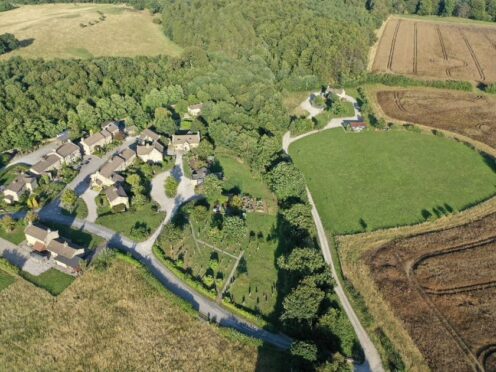A selection of picturesque photographs of Emmerdale village has been released in celebration of the soap’s 50th anniversary.
The ITV programme was first broadcast on October 16 1972 and was originally filmed in the real-life village of Arncliffe in the Yorkshire Dales before moving to Esholt in West Yorkshire.
After 22 years the production moved to the Harewood Estate, where a replica of Esholt was constructed, after the village became too busy to film, with congestion and disruption caused by visits from fans hoping to catch a glimpse of the soap’s characters and locations.
Is this the most beautiful TV set in the world?
Celebrating the show's 50th anniversary with a new set of snaps 📸 https://t.co/DXAvFLGle5#Emmerdale @ITV @itvhub @WeAreSTV pic.twitter.com/QDlZa8XOs0
— Emmerdale (@emmerdale) August 17, 2022
The move took place over Christmas – the only time the soap takes a break from filming – in 1996 and the set was first used in 1997.
The purpose-built village was constructed over the course of 20 weeks and has its own electricity and water supply, as well as phone lines, sanitation and a high-tech security system, although it has no foundations or permanent structures.
The Emmerdale village covers more than 11 acres of land in the Yorkshire Dales, with all its buildings classed as temporary structures and most built using timber structures covered in limestone cladding, designed to emulate 1600s housing designs built with Yorkshire limestone.
In order to create a realistic-looking village, the set’s designers used a number of methods to effectively age the buildings including spraying the houses with yoghurt and manure to encourage lichen to grow quickly on the walls and roofs.
Steps leading up to houses were physically ground down to achieve a look of centuries of weathering, and ivy and other species were introduced at a mature state so as not to look freshly planted.

Real headstones were salvaged from an 18th century east London graveyard when it was redeveloped, and used in the Emmerdale graveyard which holds characters who have died in the show during its 50-year run.
The dead include Carl, Matthew, Max and Tom King, Jack, Jacob, Joe and Sarah Sugden, Chris and Frank Tate and Henry Wilks.
More recent graves are those of Gennie Walker, Robbie Lawson, Katie Sugden and Donna Windsor.
There are also gravestones of the soap’s crew members who previously worked on the show but are still alive including Mike Long, the designer of the Emmerdale village, and Timothy J Fee, the former line producer of Emmerdale.

To increase the authenticity of the houses on the set, each of the properties in the village has their own chimney fitted with small smoke machines, which are controlled by a switch.
The village also includes 900 square miles of turf, which is maintained by a full-time gardener, and as the show is filmed six weeks in advance of airing the production team ensures plants in the village are in flower at the correct time. In order to achieve this, bulbs are nurtured in greenhouses before being planted outside.
Set away from the main village, the buildings for Holdgate Farm, Pollard’s Barn and the Dingle’s house are the only real buildings on the set – dating back more than 160 years, they would have originally been part of a working farm on the Harewood Estate.
